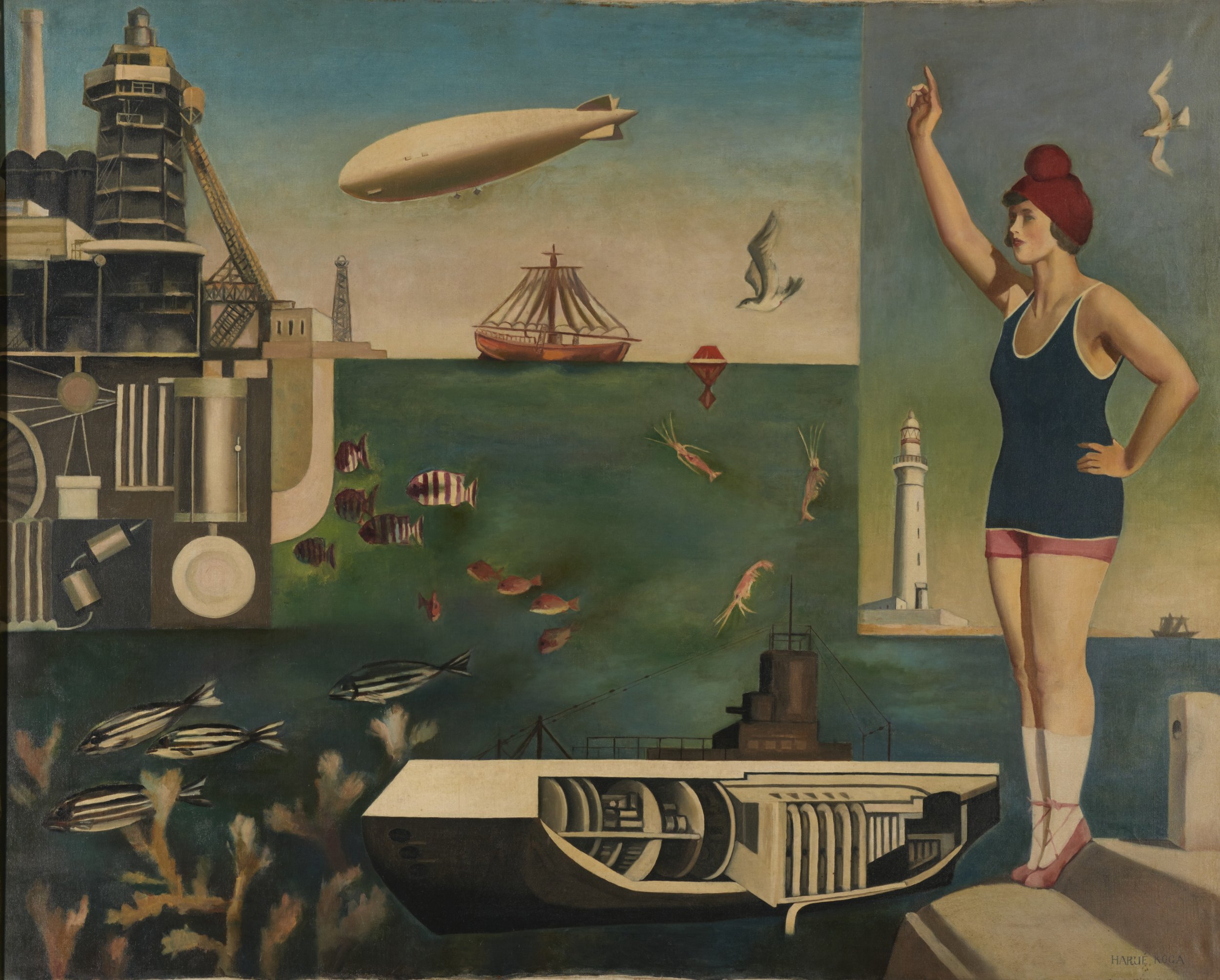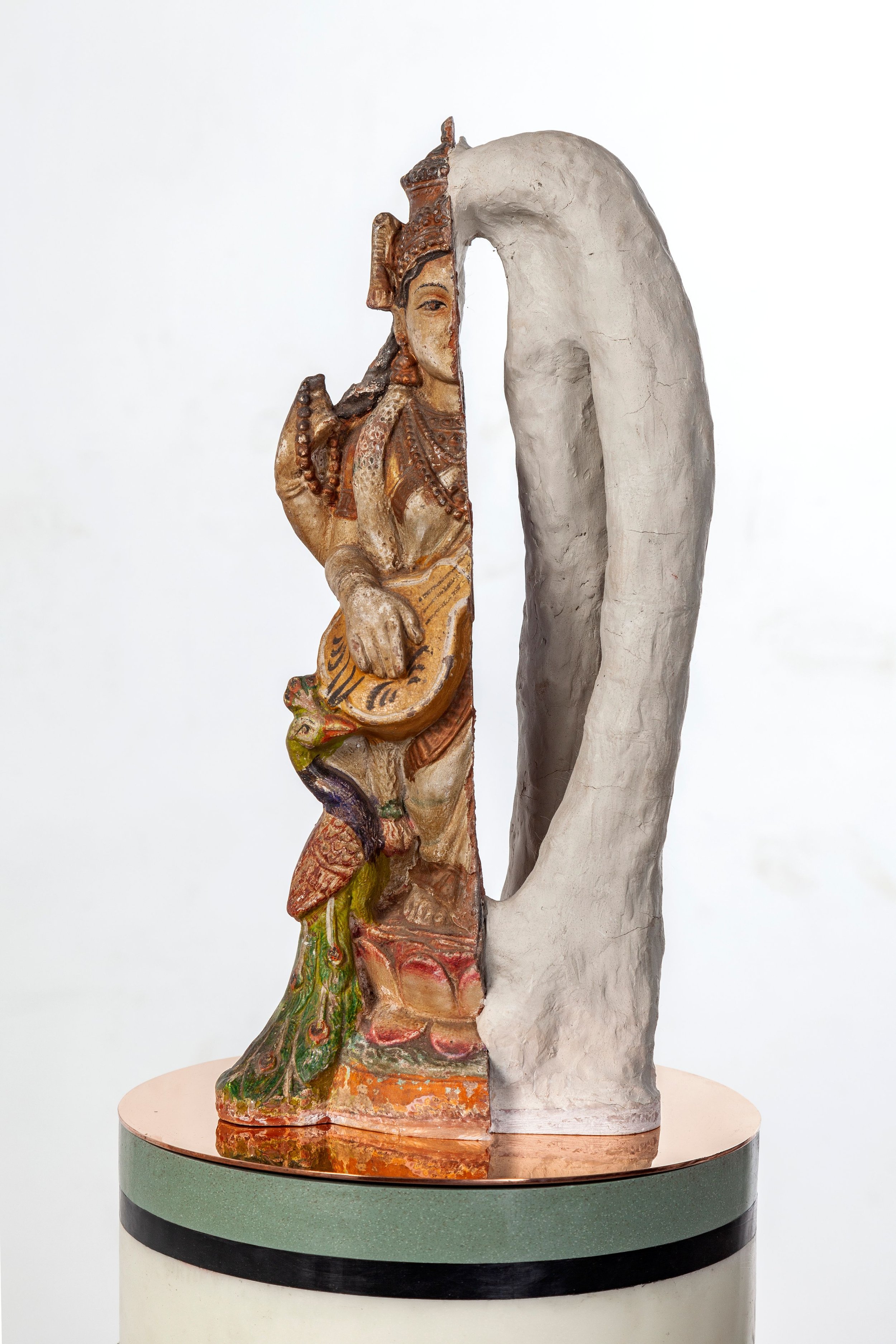The Magnificent World of Surrealism
/Out of the grim shadow of the First World War came the unbridled flourish of Surrealism. Over a hundred years later, Surrealist art is more significant than ever before.
Strange, provocative, wild and sometimes disturbing, the universe created by Surrealist artists has always invited a double-take. Surrealism is not known for its soft and saccharine aesthetic, but for its glitchy, distorted figures, dream-like landscapes, boundary-breaking ideas and a bewildering juxtaposition of objects.
When you think of Surrealism, the iconoclastic Salvador Dali and his melting clocks or the lobster telephone come hurtling to mind. Surrealism rose to prominence in the 1920s, as an intellectual and artistic movement, with French poet André Breton at the forefront. This year, it returns as the overarching theme adopted by the Venice Biennale, which began on 23 April and ends on 27 November. The inspiration for the biennale’s 59th iteration, helmed by director and chief curator Cecilia Alemani, has been sourced from Surrealist painter Leonora Carrington’s picture book for children titled The Milk of Dreams, where men have houses for heads and children can chomp through walls.
Salvador Dalí, Lobster Telephone, 1938, Tate Purchased 1981 © Salvador Dali, Gala-Salvador Dali Foundation/DACS, London 2022
Globally, several galleries and museums are currently focusing on Surrealist art as well. The ongoing show at Tate Modern, UK, for instance, titled Surrealism Beyond Borders (on display until 29 August), demonstrates how the cultural phenomenon influenced artists across many cities including Cairo, Seoul, Lisbon and Tokyo. There is art, photography, film and sculpture on view. Some of the works include Umi (The Sea), an oil on canvas by Japanese surrealist artist Koga Harue, and Untitled, from An Ode to Necrophilia by Kati Horna, a Hungarian-born Mexican photojournalist. There is also Sotheby’s recent auction titled Surrealism and its Legacy, featuring works by Man Ray and René Magritte.
Koga Harue, Umi (The Sea), 1929, The National Museum of Modern Art, Tokyo. Photo: MOMAT/DNPartcom
Kati Horna, Untitled from Ode to Necrophilia, Mexico City 1962 © Kati Horna Estate. Courtesy Michael Hoppen Gallery
Surrealist art certainly seems to be the theme of the moment. One can make an easy correlation between the grim present and what happened a century ago. In the 1920s, Surrealism took birth in Paris, emerging from the shadows of a debilitating First World War and the Spanish Flu. Nothing seemed certain back then. Today, we are in the midst of a life-threatening pandemic, holding haptic digital meets, witnessing Russian forces invade Ukraine and, in India, right-wing fundamentalism is on a dangerous, worrying rise. In essence, reality is becoming seemingly more bizarre and unstable.
Out of the grim and confining circumstances of the First World War came the unbridled flourish of Surrealism. Coincidentally, 100 years later, here we are, watching Surrealist art become more significant than ever before. Interestingly, Magritte’s The Lovers II (1928), which depicts a man and woman kissing, while their heads are veiled by white cloth (evocative of a shroud), resurfaced during the first wave of the Covid-19 outbreak as an apt comment on our terrifying reality.
The extraordinary artist Bharti Kher, known for her depiction of eccentric, fantastical beings is currently exhibiting her work at a group show titled Uncombed, Unforeseen, Unconstrained at Conservatorio di Musica Benedetto Marcello in Italy, which opened in April. It is one of the Venice Biennale’s collateral events. The works exhibited at the show respond to “various unfavourable phenomena” influencing our lives.
Kher’s Intermediaries series, which is a part of the show, consists of “half-breeds”–a growing collection of broken clay figures pieced together–that reflect on “the many possibilities of the self”. Kher’s sculptures and installations leave us with the unexpected, attempting to tangle and play with one’s fixed views. She is known for her pieces like Animus Mundi, a sculpture of a nude figure bearing the head of a bull with a bright-red lacquered sari spilling from her mouth, reminiscent of blood, and Hungry Dogs Eat Dirty Pudding, an artwork that features a vacuum cleaner covered in tawdry animal fur and attached to a dog’s head.
Installation View, Bharti Kher, The Intermediaries, 2019. Photography © Francesca Allegretto
BHARTI KHER, Self-portrait, 2019, Argile, cEment, cire, cuivre/laiton 168 cm, Ø 30.5 cm. Photography: Jeetin Jagdish, Courtesy of the Artist and Perrotin
There are other artists in India who paint baffling, uncanny worlds. Arpita Singh’s canvases, for instance, are filled with floating torsos, bodies draped in intestine coils, miniature tanks chasing dhoti-clad men who run in a terrifying panic. As magnetic as her paintings are with their gloaming blues and popping pinks, they are equally ravelling and chaotic–disturbing all probabilities of a coherent narrative. There are texts in the composition which can be read as codes or absolute gibberish. Singh picks scenes, figures, objects from snatches of memory and dreams, and paints them.
Arpita Singh, My Mother, 1993, oil on canvas. courtesy kiran nadar museum of art
Rithika Merchant’s watercolour artworks consisting of hybrid beings, also gesture to the world of Surrealism. There is something riveting about her vision that draws you in. Her artworks are strange yet exquisite. The worlds she conjures are defined by their vivid hues of egg blue, red-brown, ochre and jade green. Shapely eyes serve as surrogates for heads and wings for arms. The creatures have constellations tattooed on their bodies or are covered magnificently in earthy-hued feathers. Merchant describes her work “semi-surreal”, identifying her fascination for myths, fantasy and dreams.
Rithika Merchant, Melancholic, 2017, Gouache and ink on paper, 15.7 x 11.8 in. © Rithika Merchant, 2017
Rithika Merchant, Phlegmatic, 2017, Gouache and ink on paper, 15.7 x 11.8 in. © Rithika Merchant, 2017
Over the years, Surrealist art has become a global phenomenon. It’s a genre that is difficult to put in a box as it flouts conventions, follows no rules and has no particular formula. To put it simply, it is an artist’s expression–a peephole into their consciousness. Simultaneously, however, it encourages us to reconsider reality and its inherent distortions.
Radhika is an independent journalist who writes on arts and culture, marginalised communities, history and gender. She holds a Masters degree in Arts and Culture from Columbia University, New York. Her work has been published in Al Jazeera, Huffington Post, Netflix, Atlas Obscura, Hyperallergic, Vogue India, Conde Nast Traveller India, Platform magazine and several other publications. Radhika is accessible via Instagram @radhika_iy and her website.








